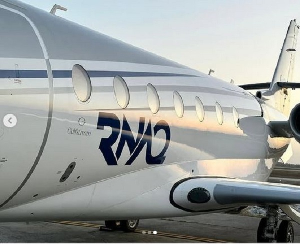Alex Bossman Baafi
No concerned citizen of this country can deny the fact that the perennial Liquefied Petroleum Gas (LPG) shortage in the country since 2009 is leaving severe untold hardships on the good people of this country. This has come about as a result of the disruption of many small scale businesses in the country not to mention the inconveniences that the households nationwide are experiencing for lack of what is commonly referred to as gas.
I was moved to write this article when I made several unsuccessful attempts to find and buy gas to finish cooking my light “Aponkye Nkrakra” which was left half-way on my cooker for shortage of gas after a hard day’s work. As I was tossing my mind around and thinking aloud, I remembered one of the topics in Economics studied in my secondary school days known as Price Discrimination. From my elementary economics background, I think practising price discrimination will help solve the LPG shortage problems.
To start with, there are three major varieties of price discrimination. They are First-degree, Second-degree and Third-degree price discriminations. The first-degree price discrimination is where the firm charges each consumer the maximum price he or she is willing or prepared to pay for each unit of the product. For example, stallholders in a market or streets usually use the price discrimination. Two people may buy a pair of socks from a hawker on the street at different prices. The second-degree price discrimination is where the firm charges customers different prices according to how much they purchase. It may charge a high price for the first so many units, a lower price for the rest so many units, a lower price again for the rest, and so on. For example, electricity companies in some countries charge a high price for the first so many kilowatts. This is the amount of electricity that would typically be used for lighting and running appliances. In other words, the uses for which there is no substitute fuel. Additional kilowatts are charged at a much lower rate. This is electricity that is typically used for heating and cooking where there are alternative fuels.
The third-degree price discrimination is where consumers are grouped into two or more independent markets and a separate price is charged in each market. Examples include different – priced seats in aeroplanes (business class & economy class), trains and on buses for say adults and children; and different prices charged for the same product in different countries. This third-degree price discrimination is more common than the first or second-degree discrimination and this is what I am recommending for adoption and implementation to solve our LPG shortage problem.
Before I come back to the third-degree price discrimination, let me hasten to add that, for price discrimination to work there are three conditions that must be met. First, the firm must be able to set its price. Thus, price discrimination will be impossible under perfect competition where firms are price takers. Second, markets must be separated. Consumers in the low-priced market must not be able to resell the product in the high-priced market. Third, demand elasticity must differ in each market. The firm will charge high price in the market where demand is less elastic, and hence less sensitive to a price rise.
Using the third-degree price discrimination concept, let’s take the National Petroleum Authority (NPA) to be the firm with LPG as the product; NPA divides consumers of LPG into domestic market and commercial transportation market. Suppliers in the domestic market will be charged lower price whilst that of the commercial transportation pay higher price for the same product which is the LPG even though the selling price to consumers will be the same in both markets. The NPA will set the price. LPG dealers have already separated the market. At filling stations, cars filling stands are different from the domestic users’ stand and where it is not like that, they must be compelled by law to separate it. Demand elasticity in the commercial transportation market is less elastic. This simply means a large change in price will bring about a smaller proportionate change in the quantity demand of the LPG. This will hold because LPG is cheaper as compared to petrol or diesel and therefore a slight increase in the price will not discourage its demand so long as it remains cheaper than petrol and diesel.
Now to discourage diversion of gas earmarked for the domestic market, the NPA should set the price of gas in such a way that the profit margin for the domestic market would be say 50% and that of commercial transport market will be 20% for selling the same volume in both markets. For practical example and for purposes of illustration let us assume a supplier in the commercial transportation has only one taxi driver as his customer who will visit the gas station 8 times in a month to fill the taxi at GHc 12, assuming the cost price of the gas is GHc10 per cylinder at Tema Oil Refinery (TOR) then the profit margin in this transaction is GHc16.00 for the month. That is, the supplier pays 8 X GHc10 = GHc80 and sold it to his taxi driver customer at 8 X GHc12 = GHc96 making GHc16 profit. 16 divided by 80 multiplied by 100% gives 20%. In the case of the supplier of the domestic market, assuming he has one household customer who comes to fill the cylinder once a month at the given GHc12, the supplier pay GHc8 and government adds GHc2 subsidy to make it GHc10 set by the NPA. By selling to his customer at GHc12 the supplier makes profit of GHc4. GHc4 divided by GHc8 multiplied by 100% gives 50% profit. The thinking behind this is to make operating in the domestic market more lucrative and attractive by attracting more investment in that segment of the gas market.
The beauty of the solution is that NPA will earn higher revenue from any given level of sale that will be sufficient to replenish and expand stock at all times. This will alleviate all the hardships on domestic users as well as the commercial transporters depending on LPG for their domestic and commercial businesses. The price of LPG is having a positive impact on transportation fares helping to keep inflation low. This is one of the reasons why we should not discourage its consumption for commercial transportation. We can harness the use of LPG to create more jobs for our teaming jobless people. Thus, in my humble opinion, temporary or total ban of commercial transporters from using LPG is crude, barbaric and defeatism solution that will not work in the interest of the nation. It is high time the government learnt from it past mistakes that are harming the economy by seeking pragmatic solutions to them.
Email: abkbossman@yahoo.co.uk
Opinions of Saturday, 18 June 2011
Columnist: Baafi, Alex Bossman














